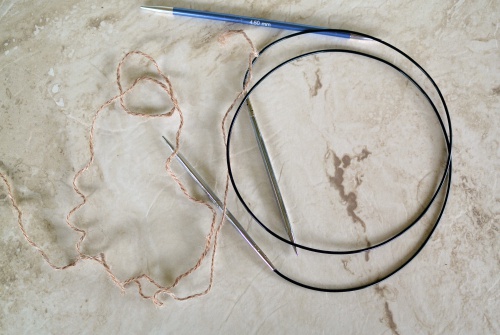One of the things I do regularly is scroll through knitting groups on social media to see what techniques or pattern wording knitters are struggling with. I then use this information to make my own patterns better and suggest things to help you make yours better too. Something I hear a lot of people whining about is the garter tab cast-on. Some people utterly despise this rather innocuous cast on. Why all the hate? I decided to investigate.
The Problem
The complaints about garter tab cast-on come down to two main issues – the crochet provisional cast-on and picking up stitches along a cast-on edge. The grumbling about a provisional cast-on centers around the technique. First, it requires you to find a crochet hook, then to remember how to use a crochet hook to do a knitting cast-on (since it isn’t a technique most knitters use regularly), and then to remember which end of the cast-on to use for unzipping (because who wants to spend time picking out scrap yarn on stitch at a time). The grousing about the second method is that it leaves a seam or a ridge on one side of the work that rather spoils the uniformity of the edge. And to be honest, picking up stitches along a cast-on edge is fiddly at best.
The Theory
So, I set about finding a way to do a garter tab cast-on that didn’t involve picking up stitches on a cast-on edge OR finding a crochet hook. Being an avid sock knitter, I wondered if the provisional cast-ons used for beginning toe-up socks could be applied. Turkish, Figure Eight, and Judy’s Magic Cast-ons are all create beautifully seamless, so I couldn’t see why it wouldn’t work. Armed with a double pointed needle (dpn), a circular needle, and my yarn, I set out to test the theory.
Before you tell me that finding a dpn is just as much trouble as finding a crochet hook, the following technique will work with any type of spare knitting needle, a cable needle, a tapestry needle, or if you don’t have one of those a bamboo skewer, a pencil, a toothpick, or an orange stick from your manicure kit will work if that’s all you have available. It will only have to hold a few stitches until you can knit the first row.
The Technique
To begin, hold the dpn and one end of the circular needle side by side. Then, cast on the required number of stitches using your favorite toe-up sock cast on. In the sample, I cast on five stitches using the Turkish cast-on method. I choose Turkish because it is the fastest (just wrap the yarn around the needle) but if you like Judy’s Magic or Figure Eight cast-on better, either one of those will work equally well.
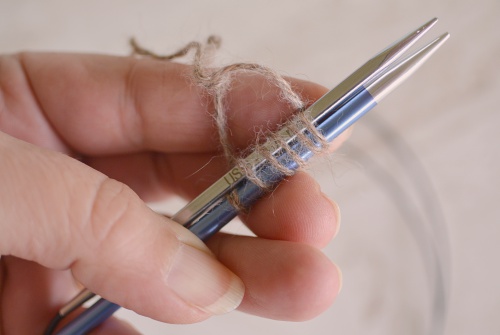
Next, slide the circular needle so half the cast-on stitches are resting on the cord and the other half are on the needle ready to knit.
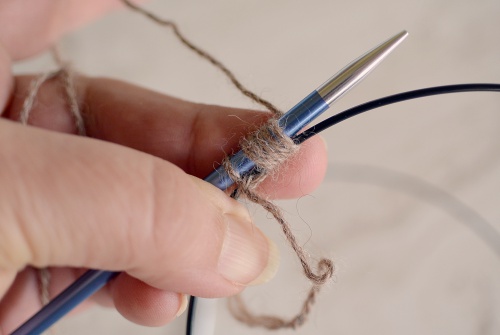
Using the circular needle as the working needle, knit the first half of the cast-on stitches (I knit 5 stitches). If you were knitting a sock, you would now rotate the work and knit the other half of the stitches but instead, you will leave those stitches on the cord and ignore them for a bit.
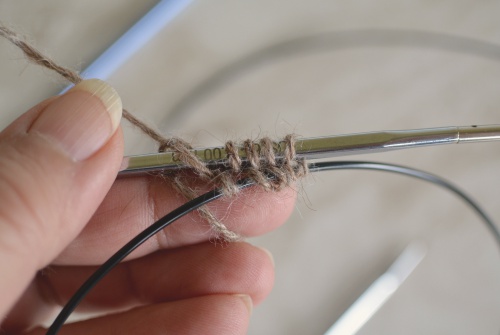
Turn your work, because you will be working flat for a bit, and knit the 5 stitches you just knit, leaving the other half of the cast-on held on the cord for now.
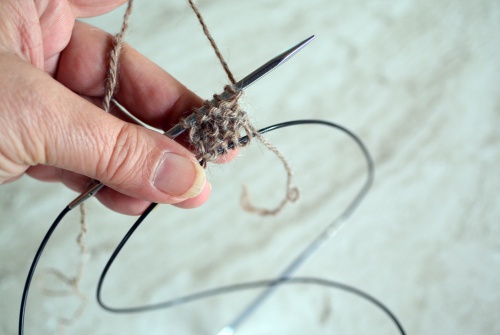
Continue working flat until you have knit the number of rows required by the pattern (usually twice the number of stitches that you will pick up along the edge). Here I have knit 30 rows because I plan to pick up 15 stitches along the garter edge. You now have a long strip of knitting with half of the live stitches on the needle and half of the live stitches resting on the needle cord.
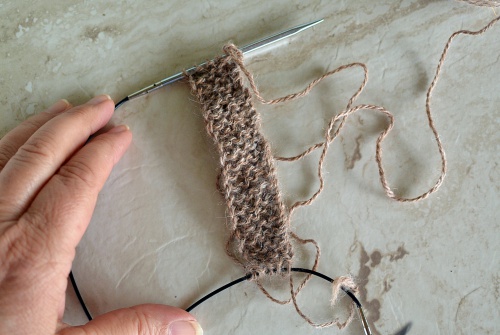
Now, rotate your work 90-degrees clockwise and pick up one stitch for each garter ridge on the edge of the piece. In my example, I picked up 10 stitches.
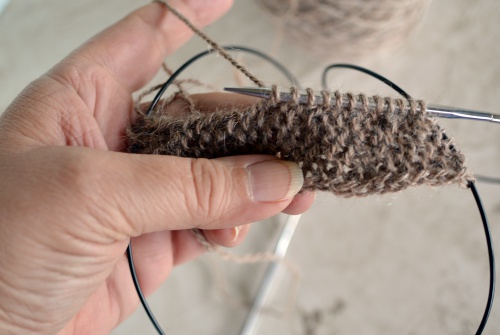
Now, you are back around to the stitches held on the cord.
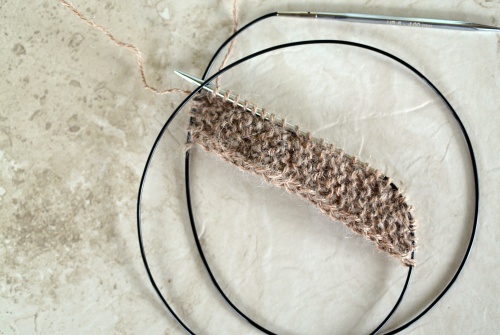
Slide those stitches onto the left needle.
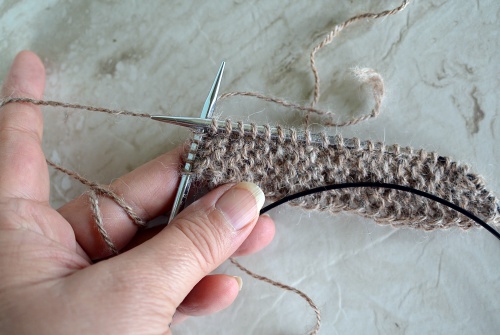
Now, knit the stitches that formed the other half of your provisional cast on.
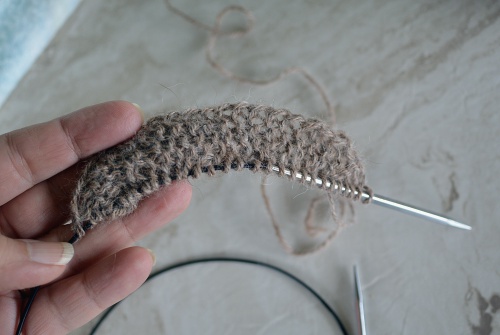
Boom! You have finished your garter tab cast-on without having to pick up cast-on stitches or find a crochet hook. This approach produces a seamless tab that is completely reversible.
You may commence your regular shawl knitting now.

